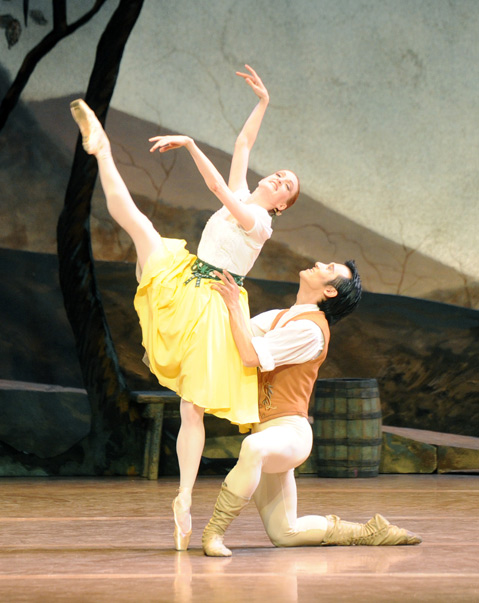Review: Giselle at the Granada Theatre
Royal New Zealand Ballet’s Subtly Updated Classic
A young peasant woman falls in love with a dashing young man; he turns out to be a nobleman in disguise. When our ingénue discovers her love is both out of her league and betrothed to another, she dies of a broken heart. So pure and innocent is her love that even from beyond the grave, she defends the man who seduced her.
Written as a ballet libretto in 1841, Giselle is in no way a modern story; by contemporary feminist standards, it’s an appalling tale of woman as hopeless romantic, doomed by her native weakness and naïveté.
Or is it?

In Royal New Zealand Ballet’s rendition of the tale, that’s not so clear. As danced by American Ballet Theatre principal ballerina Gillian Murphy, Giselle certainly has an ethereal beauty. It’s hard to imagine anyone better suited to the ghostly aspect of this role. Murphy’s ability to appear weightless is helped along by her practically translucent skin topped with a shock of auburn hair. Yet even in the first act of the ballet, when Giselle is still this side of the veil, Murphy conveys not so much weakness and innocence as purity of intention. From the way she glides across the stage, borne aloft by delicate bourrées to the most dramatic arabesque penchées, she commands attention through absolute clarity and exquisite self-control.
If Murphy achieves a more modern, respectable Giselle, the price is in her descent into madness. Even as she lets her hair down, stumbles from villager to villager, and swings a sword around halfheartedly, Murphy maintains a kind of graceful decorum; from the beginning she was not quite of this plane, and her death feels more inevitable than shocking.
Count Albrecht, danced by Qi Huan, is Giselle’s complete opposite. All swagger and explosive power, Huan sometimes verges on a loss of control, launching into huge, loose tour jetés that seem to hang in the air a split second longer than they should. Yet for all his bravado, Huan brings a boyish innocence to the role; rather than a heartless and duplicitous count, we get the sense of an openhearted young man trapped by social expectation.
In terms of design, Royal New Zealand’s rendition hones close to tradition, from the elaborate set complete with ramshackle cabins and distant mountains to the misty forest and iconic romantic tutus of the second act. The success of this clean, clear production isn’t in dramatic overhauls of the traditional narrative; it’s in subtle shifts of emphasis that lend the tragic heroine a little self-respect.



